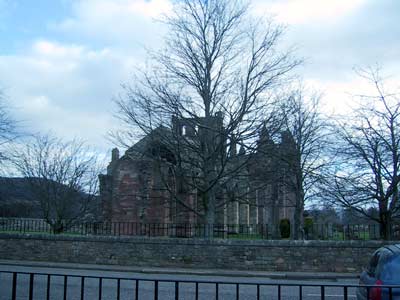 |
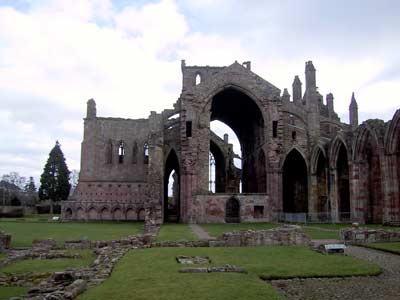 |
|
It was David I, King of Scotland from 1124 to 1153, who founded
monasteries throughout Scotland including the abbeys at Kelso and Jedburgh. In
1136, he invited Cistercian monks from Yorkshire to settle in Melrose. David I's
step-son, St Waltheof, although never officially canonised was famous for
performing miracles and was buried in the Chapter House. In 1249, King Alexander
II went against tradition and chose to be buried beside the high altar at
Melrose instead of Dunfermline Abbey, which had become the royal mausoleum. The
Bruces were strong supporters of the abbey and granted them exemptions from
taxes and duties, letters of protection, and large sums for rebuilding the parts
destroyed during the English raids. In 1326, King Robert the Bruce allocated
£100 a year from the royal revenues for the provision of an additional dish for
each monk known as the "King's Dish". This treat consisted of rice in almond
milk. |
|
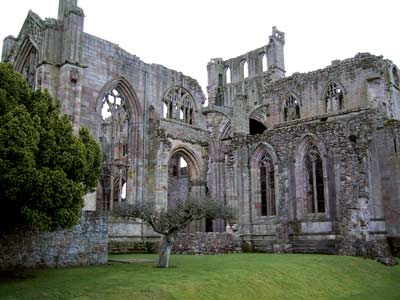 |
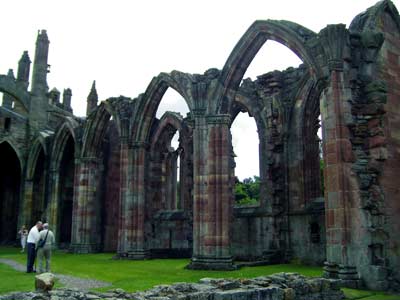 |
|
The belief that the physical remains retain a connection with the person to whom they belonged is a very ancient one. Although the practice of dismembering parts of the body to use as talismans or objects of worship was banned by the Church in 1299, it was not a custom which would die out easily. The earliest instance comes from France and there is evidence that it was very common for the French and English royal families to bury the hearts of their dead separately. In Scotland, there are fewer examples, but one of the most famous is the burial of the heart of Robert the Bruce. The other two are the heart burial of John Balliol by his devoted wife Dervorgilla, Lady of Galloway, and the heart burial of Sir James Douglas, companion to Robert I. Robert and Douglas both died fighting in Spain but their hearts were allegedly rapatriated to Scotland by Sir William Keith. The casket believed to contain Robert the Bruce's heart was originally excavated in 1921 in the Chapter House and subsequently re-buried. The casket was once again brought up during the 1997 excavations to be re-buried once more. |
|
 |
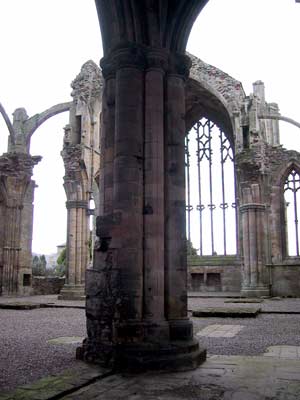 |
|
Almost nothing remains of the original church destroyed in 1385 by Richard II. The re-building which took place wiped out the austerity of the first building and was most probably begun by an English mason and continued by French and Scottish masons. However, resources seemed to fail and it would only have been two-thirds finished by the time of the Reformation in 1560. The new church was built to the same earlier Cistercian plan-type but a central bell tower, elaborate stone vaults above the whole building, and a line of chapels along the south flank were added. |
|
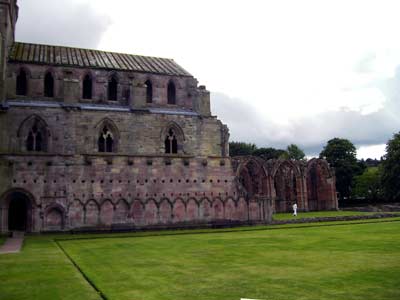 |
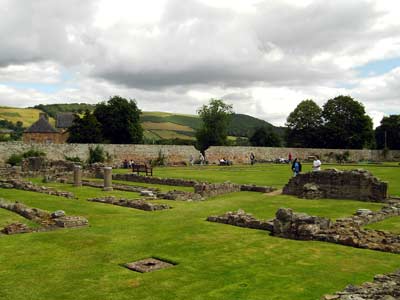 |
|
Melrose Abbey, like the other three Borders Abbeys of Dryburgh, Kelso and Jedburgh, was badly damaged during the "Rough Wooing" of 1544-45, during which the English, at the instigation of Henry VIII led a series of punitive expeditions against the Scots for refusing to agree to the marriage of the infant Queen Mary Stuart to Henry's son. During the raid against Melrose Abbey, the Douglas tombs were desecrated. Mary herself may have visited the abbey during one of her progresses in the Borders. Click HERE to visit the Priorwood Gardens... |
|
|
Open all year. Tel.: 44+ (0)1896 822562. |
|